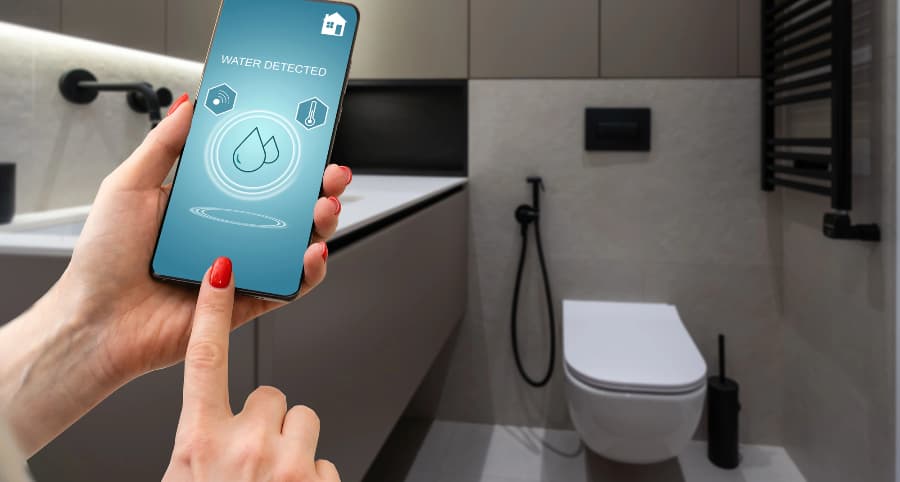How does a water sensor work and why install one with your Rochester smart home?

One minor leak at your property can result in significant difficulties and thousands of dollars in damage. You have to defend against this danger; luckily, there’s a simple way to achieve this. A water sensor is a simple, effective, and budget-friendly solution. Learn how they work and why you might integrate water sensors into your Rochester smart home.
How water sensors shield Rochester your home
Water infiltrates homes in numerous ways, whether from a plumbing issue, weather-related incident, appliance breakdown, or simple human error. Whatever way it takes place, you need to know at once, and this is how water sensors help. But how precisely do they work?
Many water sensors are conductive and function with a pair of electrodes. When water reaches the electrodes, an electrical connection is created, setting off your alarm. You’ll also find capacitive sensors that release an electrical field. Your alarm triggers when water reaches the conductive parts of these components and interrupts the field. Optical sensors employing infrared LED light are another choice.
Get more from your water sensor
Certain innovative water sensors offer even more defense as they feature integrated temperature sensors. This is a smart way to prevent frozen pipes. If there’s a drastic drop in temperature, you’ll find out right away. Taking steps before pipes break will save you from water infiltration and costly repairs.
Why incorporate water sensors into your Rochester smart home?
When water emergencies occur, you need to be warned right away. You can attain this objective by incorporating water sensors into your smart home. Whether you’re home to hear the alarm or somewhere else, you’ll receive an automatic alert on your mobile device. As an additional backup, your round-the-clock monitoring agents will be alerted. Each moment is critical in a water emergency to minimize the damage and disturbance to your life.
Where should you put water sensors?
Any area susceptible to flooding is a suitable position for water sensors. Think about installing in these locations:
- Bathrooms: Place near bathtubs or at the back of toilets.
- Basements: Water frequently enters basements through leaky walls or due to excess rain or broken sump pumps.
- Around water heaters or appliances: Any water-using appliance may eventually leak.
- Below sinks: Water sensors are great for discovering pipe leaks in areas not easy to see.
- Attics: Catch roof leaks promptly and prevent expensive repairs.
Get water sensors with your Vivint smart home
Give your property the complete protection it needs with innovative tools from Vivint. Our water sensors in Rochester connect to your Vivint mobile app to deliver instant alerts whenever your alarm is triggered. You also benefit from integrated temperature sensors to avert pipe freezing. Learn more about the smart home devices available in Rochester by dialing (585) 534-3389 today.
